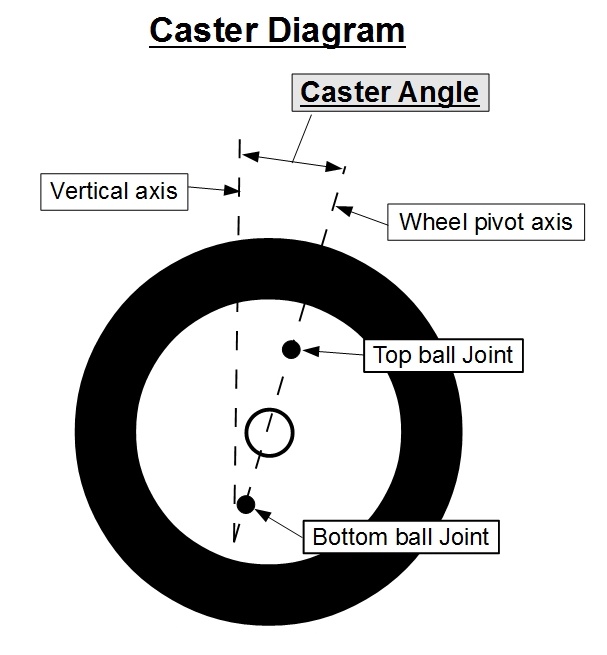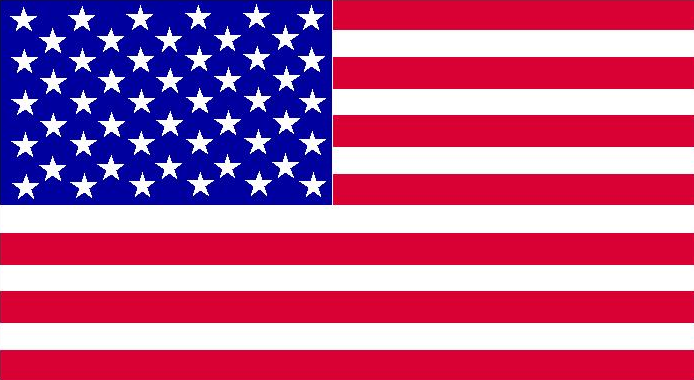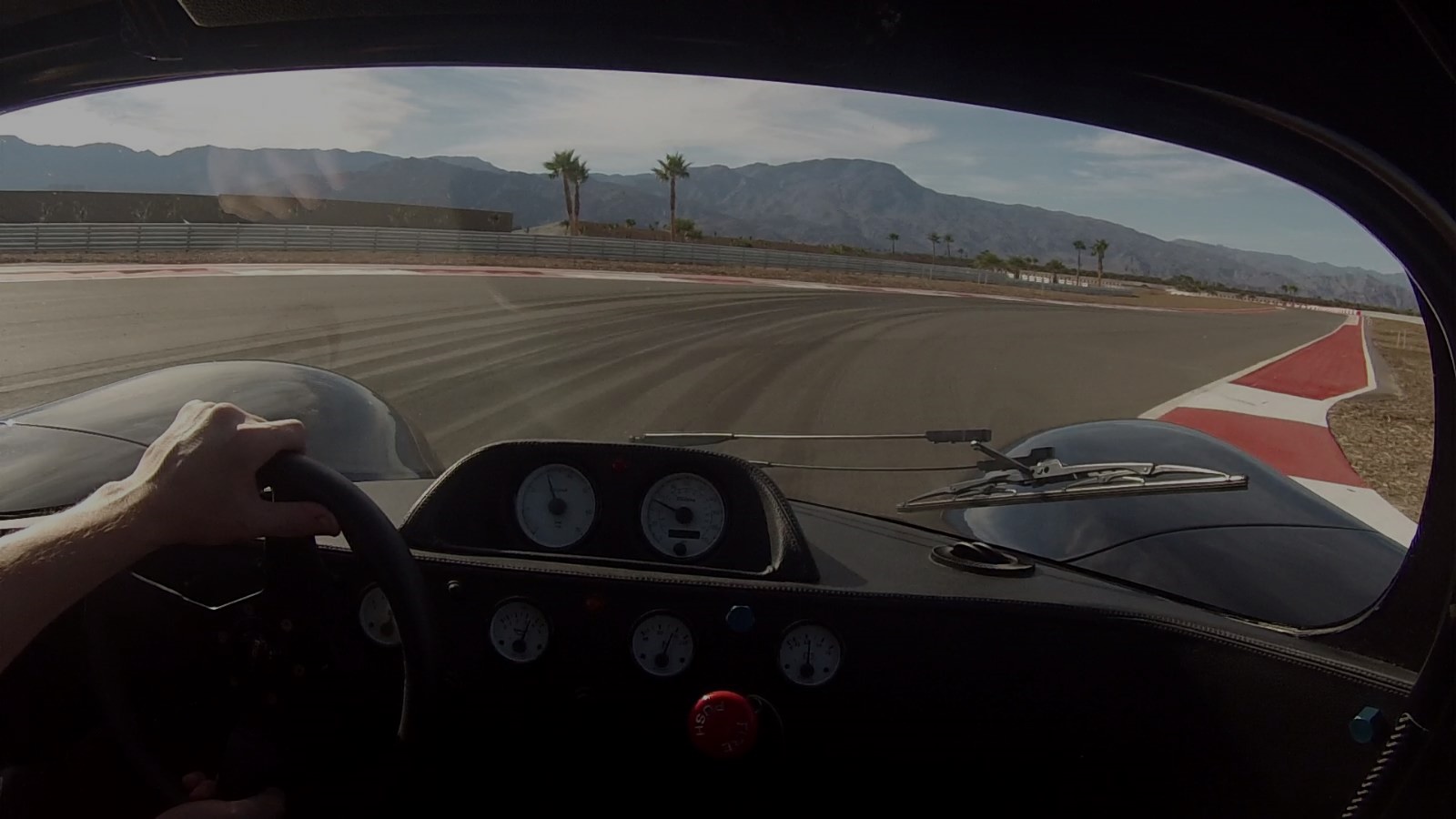FREQUENTLY ASKED QUESTIONS
On this page we discuss frequently asked questions regarding wheel alignment and wheel alignment tools. Below the FAQ section we also discuss and diagram the three most important wheel alignment terms; camber, caster, and toe.
WHY WOULD I NEED TO CHECK MY WHEEL ALIGNMENT?
- You can have big brakes, a great suspension setup, and a powerful engine, but your vehicle’s tires are what contact the road and make the biggest difference in performance and drivability. Wheel alignment changes the angle of your wheels and tires, and these angles affect vehicle handling, tire wear, tracking, and even gas mileage!
WHAT ISSUES ARE CAUSED BY IMPROPER WHEEL ALIGNMENT?
- Accelerated and abnormal tire wear
- Undesired Handling (poor turn-in, understeer, oversteer, etc.)
- Reduced MPG
- Vehicle does not track straight
WHEN WOULD WHEEL ALIGNMENT NEED TO BE CORRECTED?
- Anytime any work is performed on the vehicles suspension, such as replacing tie rods, struts, bushings, etc., the alignment will need to be checked and most likely adjusted.
- Pot holes or similar “trauma” to your suspension can knock the wheel alignment out of spec, and even bend suspension components in extreme cases.
- By owning your own wheel alignment gauge you will know if the vehicle actually needs adjusting, so no unnecessary trips (or payments!) to the alignment shop.
WHY WOULD I WANT TO CHANGE MY OWN WHEEL ALIGNMENT?
- Manufactures wheel alignment specifications are a compromise between handling, predictability, and gas mileage. So if you take your car to the track, you will likely want to change your alignment, dialing in more camber, and less toe, for example. Having your own wheel alignment tool or camber gauge makes checking your own alignment easy.
- You can save money by adjusting your vehicle(s) to the proper alignment specifications yourself, or checking to see if it needs adjusting at all.
WHEEL ALIGNMENT TERMS (Camber, Caster, Toe)
Wheel alignment is a measurement of a vehicles wheels and tires, the angles of interest are camber, caster, and toe.
TOE
Improper toe settings are the most common cause of alignment issues. Toe affects a vehicles straight line stability and turn in characteristics. When set improperly, drastic tire wear can result. Factory alignment specs for street vehicles almost always call for toe in on both the front and rear wheels. Cars used on the track or autocross course sometimes run zero or positive toe in the front for increased turn in.
Toe is the angle of the wheels when viewed from the top. If the front of the wheel is pointing inwards towards the car, the wheel is toed in. If the front of the wheel is pointing outward away from the car, the wheel is toed out.
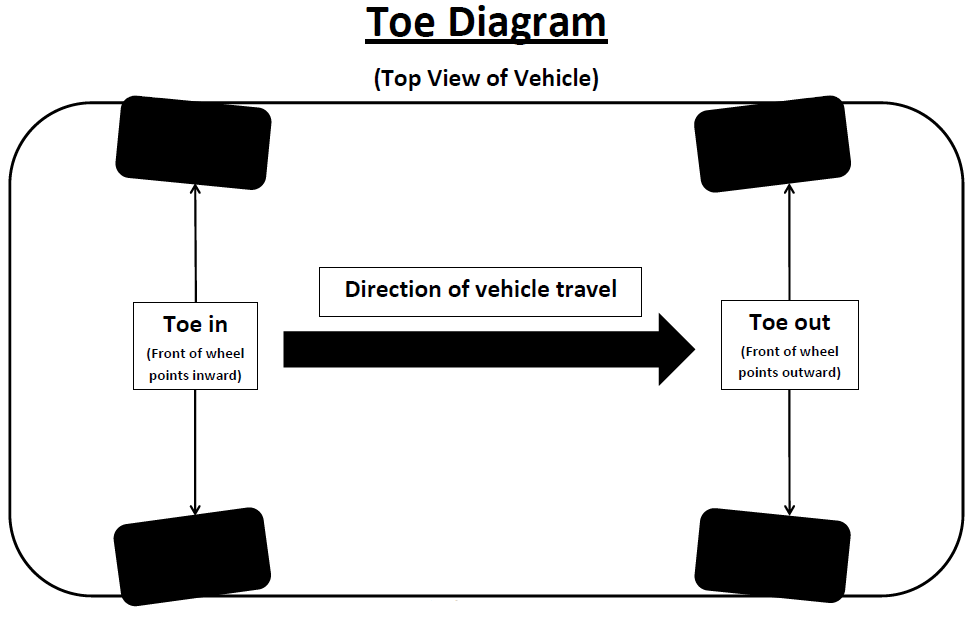
CAMBER
Camber is the angle of “tilt” of the wheels and tires when viewed from the front or rear of the vehicle. When the top of a wheel is tilted inward towards the vehicle it has negative camber. When the top of a wheel points outward away from the vehicle it has positive camber (see Diagram on right).
Increased negative camber will increase the grip of the outside tires will turning, but too much camber angle will affect tire wear as well and braking and acceleration grip.
Not having enough camber can also affect tire wear. When car with a factory alignment is driven aggressively such as at a track day or autocross, the outside of the tire will wear more than the inside. For this reason it is often desired to dial in more camber before taking your street car to the track.
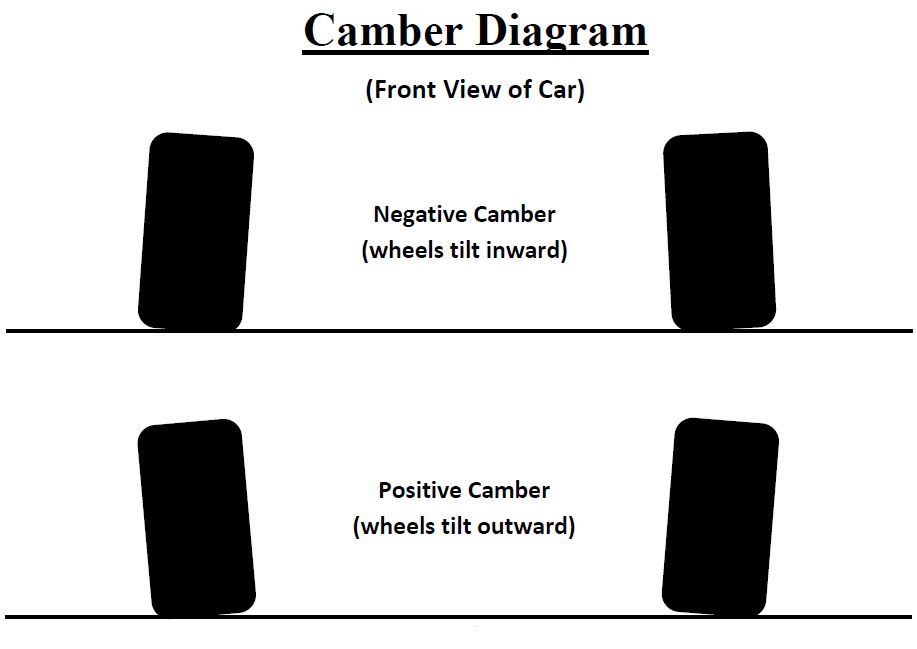
CASTER
Caster a little more complicated than camber and toe. It’s the pivot angle of the front wheels measured from vertical, when viewed from the side. A simplified way to think of it is the angle of the ball joints.
Caster affects a vehicles resistance to turning, and changes the amount of camber gain a wheel has when turned. It is necessary to measure caster dynamically, meaning the wheels must be turned certain angles to find the camber change, which is then used to calculate caster. Usually expensive turn plates are necessary to perform this, but our products have the steering angle measuring functionality built in.
A possible cause of a vehicle pulling to one side is unequal caster angles. Except for circle track racing, it is desired for the left and right caster angles to be equal so the vehicle will track straight.
